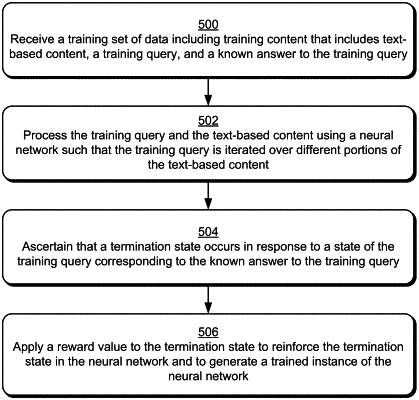| CPC G06N 3/08 (2013.01) [G06F 16/3347 (2019.01); G06N 3/044 (2023.01); G06N 5/04 (2013.01)] | 16 Claims |

|
1. A system comprising:
at least one processor; and
one or more computer-readable storage media storing a neural network that is executable by the at least one processor to implement functionality comprising:
an internal state to represent a state of a query for information about text-based content, the internal state evolving as different portions of the text-based content are analyzed;
an attention vector to be applied to different portions of the text-based content to cause the internal state to iteratively evolve from an initial state denoting a first vector representation of the state of the query through a plurality of subsequent states as the different portions of the text-based content are analyzed; and
a termination gate to:
maintain the internal state, wherein a termination criterion comprises a change in the internal state;
evaluate the internal state and to terminate analysis of the text-based content in response to an occurrence of the termination criterion;
to cause the internal state to be output as an answer to the query in response to termination of the analysis;
apply a reward value to a termination state and generate a trained instance of the neural network; and
in response to the termination criterion having a false value, generate an updated attention vector, and feed the updated attention vector into a state network to update a next internal state.
|